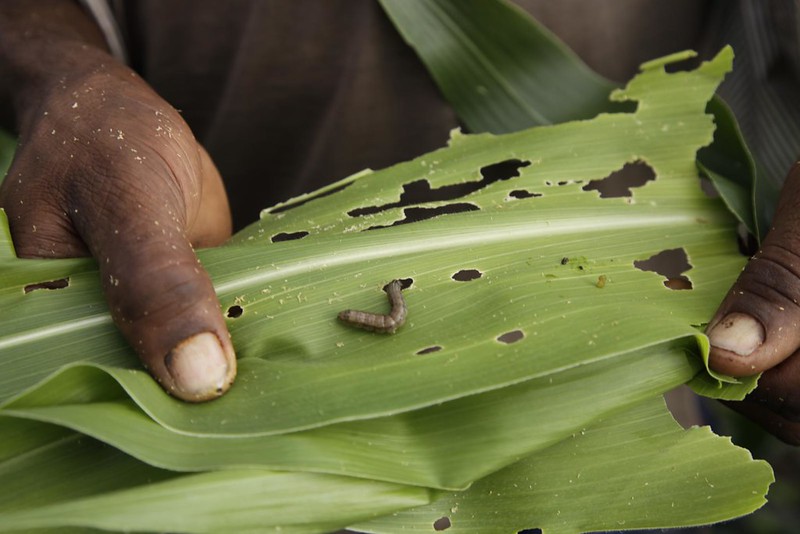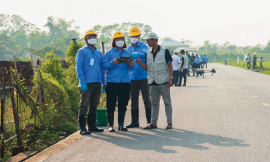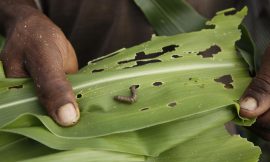Meeting the food and nutritional demands of a population expected to reach nearly 10 billion by 2050 places significant pressure on global agriculture. In recent years, this pressure has been worsened by land degradation, diminishing natural resources and increasing frequency and intensity of extreme weather events.
While these challenges have received attention from the global community, an urgent and often overlooked threat lurks – the spread of existing and new emerging pests and diseases.
Pests and disease outbreaks, such as New World Screwworm, African Swine Fever and Fusarium TR4, are spreading across borders, driven by international trade, ecological disruptions and rising temperatures. The spread of these transboundary plant pests and diseases poses a threat to global security and to the incomes of millions of small farmers in the Americas and around the world.
New World Screwworm, for instance, had been eradicated from the Americas more than twenty years ago, but since 2023, cases have been reported in Central America and Mexico. African Swine Fever, known for its viral spread among domestic and wild pigs, reappeared on the Island of La Hispaniola in 2021, after a 40-year absence, with cases reported in the Dominican Republic and Haiti. TR4, a destructive banana disease, first emerged in Asia and is now spreading westward. Alarmingly, it has already reached several countries in Latin America, posing a serious threat to banana production and livelihoods across the region.
Without decisive actions, the impact of existing and re-emerging pests and diseases on agriculture globally will worsen, jeopardising not only food production but rural economies and livelihoods. Tackling these threats is a critical challenge and an opportunity for utilising agricultural “moonshots” that harness science, technology and collective action for better global agrifood systems.
Tackling transboundary pests and diseases with early detection and epidemiological surveillance
To fight off these devastating pests and diseases, the global agricultural sector requires a new generation of scientific and technological innovations that integrate early detection, comprehensive management and resilient production systems. These innovations should not only strengthen national sanitary and phytosanitary services but also enable them to operate effectively at a supranational level.
Recognising that no single country can manage these threats alone, the Inter-American Institute for Cooperation on Agriculture (IICA) is working with governments, the private sector, academia and civil society in the Americas to strengthen epidemiological surveillance networks for livestock and crop systems. This collective approach improves monitoring, accelerates detection and supports coordinated quarantine measures against pests and diseases.
Training is a key factor for the success of this approach. Between 2024 and 2025, more than 21,600 participants — including livestock producers as well as technicians, extension workers, students, health personnel and communicators — have taken part in over 300 regional and national training events. These technical and community workshops, organised by IICA in collaboration with the United States Department of Agriculture (USDA), focus on the prevention and control of New World Screwworm. The training program’s inclusivity ensures that the productive sector and key institutional stakeholders are equipped with tools for early detection and wound management and the knowledge of the sterile insect technique. This is the leading biological tool for the eradication of pests and diseases.
Elsewhere, to fight off African Swine Fever, IICA also partnered with the USDA to implement a comprehensive strategy built around five key areas: strengthening biosecurity, expanding nationwide surveillance, engaging stakeholders, enhancing outbreak preparedness and providing financial support for affected producers. Focusing on these key areas will help lead efforts to test swine farms for African Swine Fever in Caribbean nations beyond the island of Hispaniola, filling a critical regional gap where the disease spreads across borders.
Another of the most important projects to tackle pests and diseases has been establishing the Global Alliance against Fusarium TR4 in 2021., The Alliance brings together key actors in the banana sector, recognising the crop’s vital importance to vulnerable populations, who rely on it for up to a quarter of their daily caloric intake.
The Alliance has already achieved results through four lines of action: prevention and training, cultivation and genetics of resistant varieties, methods of control and policies and support. The progress includes the discovery of the genes that provide resistance to TR4, the design of innovative production methods, including the use of soil fertilisation and fungicides and improving biosecurity on farms. To date, approximately 300 farmers have been trained in prevention and biosecurity in Paraguay, Ecuador and Colombia, and more than 500 were part of an online training.
Utilising the moonshot moment
Eradicating hunger in the world will not be possible without tackling the increasing risk that existing and new emerging pests and diseases present to agriculture. Reducing their impact on agrifood systems demands a paradigm shift towards innovation-led resilience.
This includes investing in science to develop climate-resilient crops and precision management technologies; strengthening international collaboration to coordinate surveillance, quarantine and information-sharing across borders; and empowering farmers with tools, training and access to affordable technologies that reduce vulnerability and sustain productivity.
IICA is committed to driving this transformation. By combining state-of-the-art science with on-the-ground capacity-building, the Institute works to ensure farmers and food systems across the Americas remain resilient against evolving biological threats.
Protecting global food security demands nothing less than a moonshot — one that mobilises science, policy and communities to safeguard the future of agriculture.
Header photo: FAO






